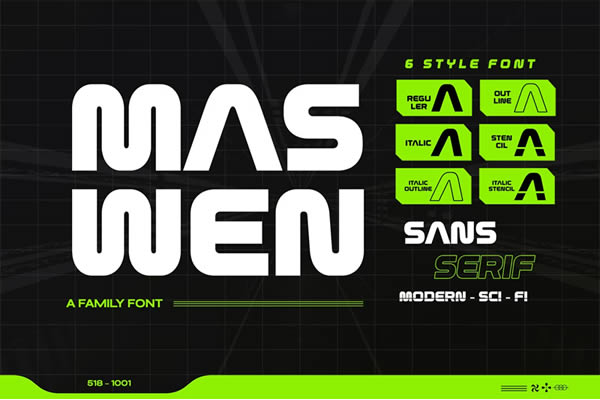
In today’s digital landscape, having a strong online presence is crucial for businesses to succeed. A well-designed website is not only visually appealing but also plays a significant role in digital marketing strategies. Web design encompasses various elements, including layout, user experience, and visual aesthetics, all of which contribute to attracting and engaging visitors. In this article, we will explore the role of web design in digital marketing and how it can impact the success of a business.
1. First Impressions and User Experience
When it comes to digital marketing, first impressions matter. A website is often the first point of contact between a business and its potential customers. A well-designed website creates a positive first impression, capturing the attention of visitors and encouraging them to explore further. On the other hand, a poorly designed website can drive users away, resulting in high bounce rates and missed opportunities.
User experience (UX) is another crucial aspect of web design. A website that is easy to navigate, intuitive, and responsive provides a positive user experience. By focusing on UX, businesses can enhance engagement, increase conversions, and build trust with their audience. A seamless and enjoyable user experience encourages visitors to stay longer on the website, explore more pages, and ultimately take the desired actions, such as making a purchase or filling out a contact form.
2. Branding and Visual Identity
Web design plays a vital role in establishing and reinforcing a brand’s visual identity. Consistency in design elements, such as colors, typography, and imagery, helps create a cohesive and recognizable brand image. A well-designed website reflects the brand’s personality, values, and unique selling propositions, allowing businesses to differentiate themselves from competitors.
Through thoughtful web design, businesses can evoke specific emotions and associations in their target audience. For example, a clean and minimalist design may convey a sense of professionalism and sophistication, while a vibrant and playful design may appeal to a younger demographic. By aligning the website design with the brand’s overall marketing strategy, businesses can strengthen their brand identity and leave a lasting impression on visitors.
3. Search Engine Optimization (SEO)
Web design and search engine optimization (SEO) go hand in hand. A well-optimized website is more likely to rank higher in search engine results pages, driving organic traffic and increasing visibility. Web design elements, such as site structure, page load speed, and mobile responsiveness, directly impact SEO performance.
Search engines prioritize websites that provide a positive user experience. A website that is mobile-friendly, loads quickly, and has clear navigation signals to search engines that is user-friendly. Additionally, well-structured HTML markup, proper use of heading tags, and optimized image alt tags contribute to better search engine visibility.
By incorporating SEO best practices into web design, businesses can improve their website’s search engine rankings, attract more organic traffic, and ultimately increase their chances of converting visitors into customers.
4. Conversion Rate Optimization (CRO)
Conversion rate optimization (CRO) is the process of improving the percentage of website visitors who take the desired action, such as making a purchase, subscribing to a newsletter, or filling out a form. Web design plays a critical role in CRO by optimizing the user journey and creating persuasive elements that encourage conversions.
Effective web design elements for CRO include clear and compelling calls-to-action (CTAs), strategically placed contact forms, and persuasive copywriting. By strategically placing CTAs throughout the website, businesses can guide visitors toward the desired actions. A well-designed contact form that is easy to fill out and visually appealing can increase form submissions. Additionally, persuasive copywriting that highlights the benefits and value propositions can further persuade visitors to take action.
By continuously testing and optimizing web design elements, businesses can improve their conversion rates, maximize the return on their marketing investments, and drive business growth.
5. Mobile Responsiveness and Accessibility
With the increasing use of mobile devices, having a mobile-responsive website is no longer optional but essential. A mobile-responsive design ensures that the website adapts to different screen sizes, providing an optimal user experience across devices. Mobile responsiveness is not only important for user experience but also for SEO, as search engines prioritize mobile-friendly websites in mobile search results.
In addition to mobile responsiveness, web design also plays a role in website accessibility. An accessible website ensures that people with disabilities can navigate and interact with the site effectively. By following accessibility guidelines and incorporating design elements that accommodate individuals with visual impairments, hearing impairments, or motor disabilities, businesses can reach a wider audience and demonstrate their commitment to inclusivity.
Conclusion
Web design plays a crucial role in digital marketing by creating a positive first impression, enhancing user experience, reinforcing branding, optimizing search engines, improving conversion rates, and ensuring mobile responsiveness and accessibility. A well-designed website is a powerful tool that can attract and engage visitors, build trust, and drive business growth. By investing in professional web design and staying updated with the latest design trends and best practices, businesses can leverage the power of their website to effectively market their products or services in the digital realm. Remember, a well-designed website is not just visually appealing, but it also serves as a strategic asset that can significantly impact the success of a business’s digital marketing efforts.
References:
- 5 examples of web design that make a big marketing impact by the Webflow Team
- The Importance of Web Design to Digital Marketing by Charlie Regnart
- Digital Influence: Web Design’s Impact On Marketing Strategy by Goran Paun
In case you have found a mistake in the text, please send a message to the author by selecting the mistake and pressing Ctrl-Enter.






